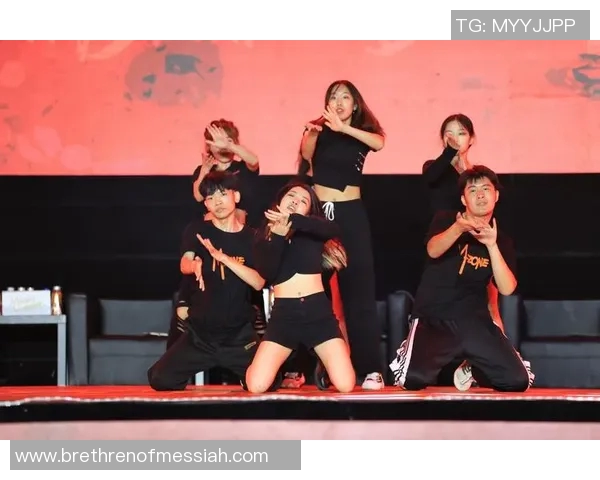本文将围绕南京街舞队的灵活性变革,探讨其对街舞文化新潮流的影响。随着社会发展和文化交流的加深,街舞作为一种艺术表现形式逐渐受到年轻人的热爱。南京街舞队在这种背景下进行了一系列灵活性的变革,不仅提升了自身的表演水平,也引发了广泛的讨论和关注。文章将从四个方面进行深入分析:首先,探讨南京街舞队灵活性变革的背景与原因;其次,分析这种变革对成员个人技能提升的影响;接着,讨论其对整体团队合作氛围的促进作用;最后,将阐述这一变化如何推动整个地区街舞文化的发展与传播。通过这些方面,我们可以更全面地理解南京街舞队灵活性变革所引发的热议及其对于未来街舞文化的新潮流的重要意义。
近年来,城市文化不断多元化发展,各种艺术形式层出不穷,尤其是年轻人群体对新兴文化表现出极大的热情。在这样的环境中,街舞作为一种富有表现力和个性的艺术形式逐渐崭露头角。南京作为历史悠久且充满现代气息的城市,自然也成为了这一潮流的重要发源地。
南京街舞队在此背景下开始进行灵活性的变革。他们意识到单一的表演风格已经无法满足观众日益增长的需求,因此决定探索更多样化、创新性的表现方式,以吸引更广泛的人群。这种转型不仅是为了迎合市场,更是为了激发团队内部创作与表达上的潜能。
此外,新媒体技术的发展为街舞文化传播提供了新的平台。通过短视频、直播等形式,一些优秀作品迅速传播开来,这也促使南京街舞队在风格上进行大胆尝试,以适应新时代观众对于视觉冲击和艺术创新的追求。
灵活性变革带来了成员个人技能的大幅提升。在传统训练模式下,成员们往往受到固定套路和风格限制,而如今,通过多样化训练,他们能够尝试不同风格,如嘻哈、锁舞等,从而丰富自己的表演技巧。同时,这种自由度也增强了他们对自身创造力的认识与应用。
例如,在实施新的培训课程后,多名队员表示自己在即兴发挥能力上有了显著提高。他们不再局限于预设动作,而是能够根据现场气氛和观众反应快速调整自己的表演内容。这种技能上的提升,让每位成员都感受到了自我价值的实现,同时也增强了团队凝聚力。
更重要的是,通过各种活动与赛事参与,队员们得以展示自己的才华,并获得及时反馈。这种互动不仅让他们在技术上得到锻炼,也让他们在心理素质上得到了磨练,为未来可能面临的大型比赛打下坚实基础。
Nanjing street dance team’s flexibility reform has also greatly enhanced the atmosphere of teamwork. Before the reform, members were often focused on their own performance and lacked communication with each other. However, with the introduction of new training methods, collaboration became a key focus.
The members began to learn how to share ideas and techniques, fostering a more open environment for creativity. This collaborative spirit not only improved the overall quality of performances 365WM完美but also strengthened interpersonal relationships within the team. Warm-up sessions turned into opportunities for idea exchanges, where everyone could contribute their thoughts and suggestions.

This sense of community has made rehearsals more enjoyable and less stressful. Members are now more willing to provide constructive feedback to one another, leading to continuous improvement in both individual skills and group dynamics. As a result, the team is not just a collection of performers but has evolved into a supportive family that encourages growth and innovation.
Nanjing street dance team's flexibility changes have sparked discussions about new trends in street dance culture across various platforms. Their innovative performances often go viral online, attracting attention from outside audiences and even media coverage. This exposure has helped raise awareness of street dance as a legitimate art form in Nanjing.
The cultural exchange between different dance teams in various cities has also been facilitated by these changes. Through joint performances and workshops, Nanjing dancers get insights into diverse styles while sharing their unique interpretations with others. This cross-pollination enriches local culture while positioning Nanjing as an emerging hub for street dance enthusiasts.
Moreover, as more young people become interested in joining dance teams or taking classes, there is a noticeable increase in local street dance events and competitions. This influx not only fosters talent development but also strengthens community ties through shared interests in dancing.
总结:
Nanjing street dance team's flexibility changes represent not just an internal evolution but also signify a broader shift within urban youth culture towards inclusivity and creativity. By embracing diversity in training styles and fostering collaboration among members, they have set an example for other groups aspiring to innovate within traditional frameworks.
The ongoing discussion surrounding these transformations reflects society's growing recognition of street dance as an important cultural expression that deserves respect and support. As this trend continues to unfold, it will undoubtedly leave lasting impacts on both local communities and the broader cultural landscape.